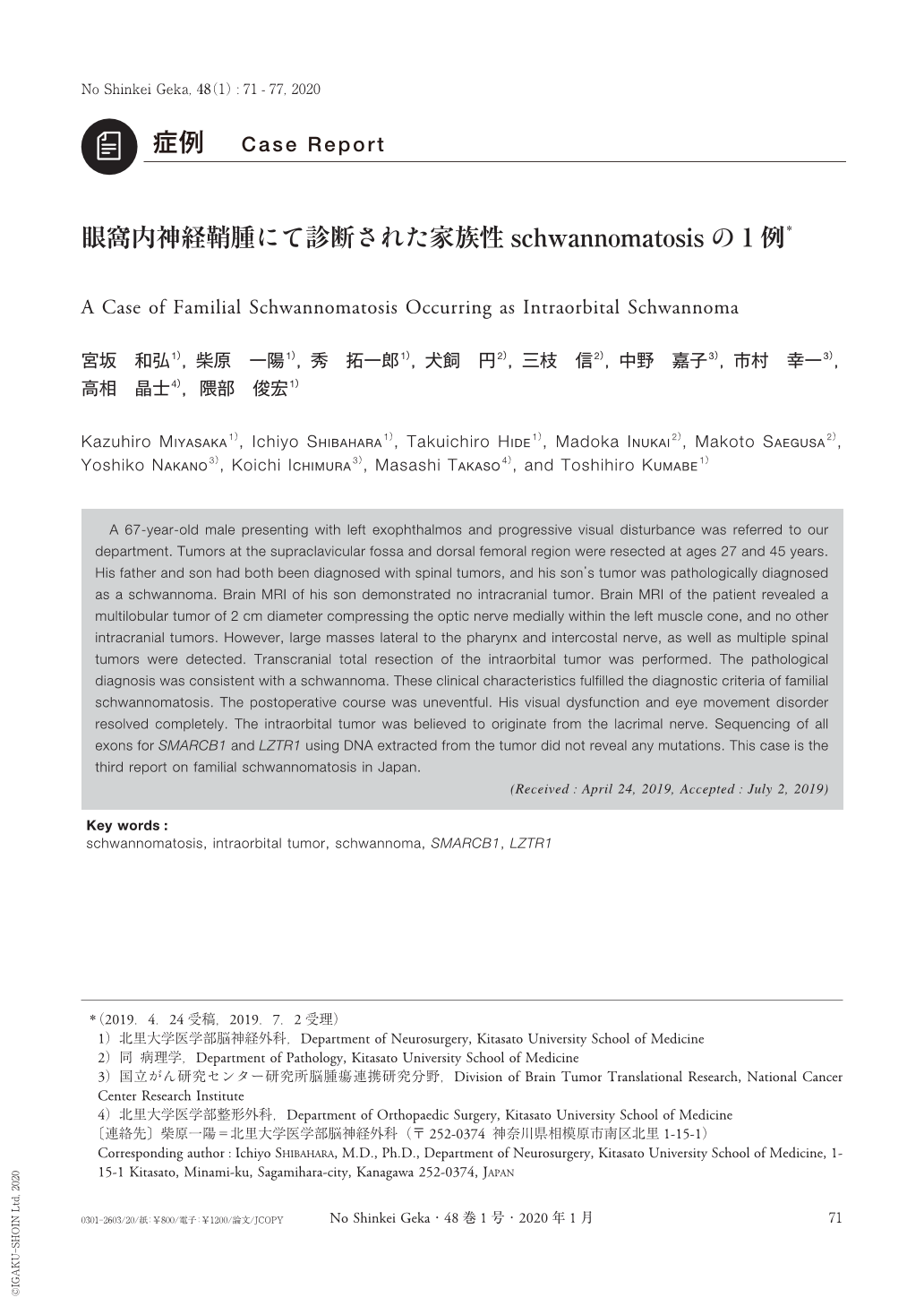Japanese
English
- 有料閲覧
- Abstract 文献概要
- 1ページ目 Look Inside
- 参考文献 Reference
Ⅰ.はじめに
家族歴のある多発性神経鞘腫を認めた場合,最初に鑑別診断に挙げるべきは神経線維腫症2型(neurofibromatosis type 2:NF2)であり,次に挙げるべきは多発性神経鞘腫症(schwannomatosis)である.Schwannomatosisは,主に脊髄や末梢神経に多発性神経鞘腫を生ずる常染色体優性遺伝性疾患であり,NF2との鑑別点として,両側前庭神経鞘腫とNF2遺伝子変異による生殖細胞系異常を伴わない点が重要とされる.しかし,片側の前庭神経鞘腫,頭蓋内の非前庭神経鞘腫,脊髄腫瘍,末梢神経鞘腫,皮下腫瘍といった症状がNF2と重複するため7),診断は必ずしも容易ではない.
今回,脊髄腫瘍の3世代にわたる家族歴と,脊髄を含めた多発性腫瘍を有し,眼窩内腫瘍摘出により神経鞘腫と診断されたことから,schwannomatosisと確定診断できた極めて稀な症例を経験したので報告する.
A 67-year-old male presenting with left exophthalmos and progressive visual disturbance was referred to our department. Tumors at the supraclavicular fossa and dorsal femoral region were resected at ages 27 and 45 years. His father and son had both been diagnosed with spinal tumors, and his son's tumor was pathologically diagnosed as a schwannoma. Brain MRI of his son demonstrated no intracranial tumor. Brain MRI of the patient revealed a multilobular tumor of 2 cm diameter compressing the optic nerve medially within the left muscle cone, and no other intracranial tumors. However, large masses lateral to the pharynx and intercostal nerve, as well as multiple spinal tumors were detected. Transcranial total resection of the intraorbital tumor was performed. The pathological diagnosis was consistent with a schwannoma. These clinical characteristics fulfilled the diagnostic criteria of familial schwannomatosis. The postoperative course was uneventful. His visual dysfunction and eye movement disorder resolved completely. The intraorbital tumor was believed to originate from the lacrimal nerve. Sequencing of all exons for SMARCB1 and LZTR1 using DNA extracted from the tumor did not reveal any mutations. This case is the third report on familial schwannomatosis in Japan.

Copyright © 2020, Igaku-Shoin Ltd. All rights reserved.


